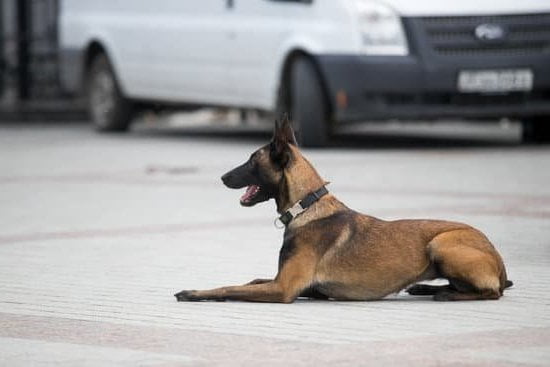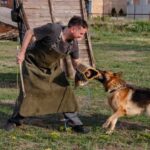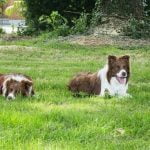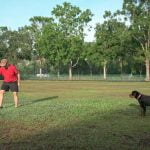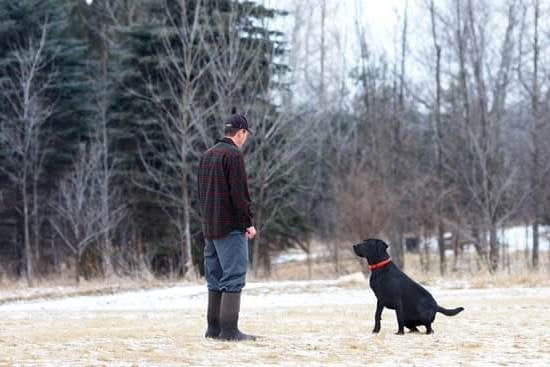Are you interested in learning how to train a dog to find things by smell? Dogs have an incredible sense of smell, and it is natural for them to use it in their daily activities. In this article, we will delve into the world of scent training and explore how you can harness your dog’s natural ability to locate items using their keen sense of smell.
Dogs have an incredibly acute sense of smell, with some breeds having up to 300 million scent receptors in their noses. Understanding this natural ability is crucial when it comes to training a dog to find things by smell. Whether you want your dog to help with search and rescue efforts, find lost items around your home, or participate in nosework competitions, scent training can be a rewarding experience for both you and your canine companion.
In this article, we will explore the various aspects of scent training, starting from choosing the right breed for this type of work, all the way through maintaining and advancing your dog’s skills. We will also discuss the importance of positive reinforcement in training and provide a step-by-step guide to teaching your dog to follow a scent trail.
By understanding your dog’s natural ability to smell, you can build a strong bond with them while also honing their skills in scent tracking.
Choosing the Right Dog for Scent Training
When it comes to training a dog to find things by smell, choosing the right breed and temperament is crucial. Not all dogs have the same level of olfactory talent, so selecting a breed known for its strong sense of smell can greatly enhance your chances of success.
Some breeds that excel in scent work include Bloodhounds, Basset Hounds, Beagles, German Shepherds, and Labrador Retrievers. These breeds are often used in search and rescue missions or as detection dogs due to their exceptional olfactory abilities.
In addition to breed, understanding the temperament of a dog is also important when considering scent training. Dogs with a high play drive and a strong desire to work are often well-suited for scent tracking activities. However, it’s important to note that with the proper training and encouragement, almost any dog can be taught how to find things by smell.
Factors to Consider When Choosing a Dog for Scent Training
- Breed-specific characteristics: Research the natural abilities and instincts of different breeds
- Temperament: Assess your dog’s willingness to work and play, as well as their level of focus and determination
- Age: While younger dogs may have more energy and enthusiasm for training, older dogs can also excel in scent work with patience and persistence
- Health: Consider the overall health and physical condition of your dog before embarking on scent training activities
Ultimately, selecting the right dog for scent training involves assessing individual breed traits as well as considering the unique personality of each dog. With the correct approach, any canine companion can become proficient in using their sense of smell for finding objects or tracking scents.
Getting Started
To start training your dog to find things by smell, it is essential to understand a dog’s natural ability to detect scents. Dogs have an incredible sense of smell, with some breeds having up to 300 million scent receptors in their noses. This makes them perfect for scent training and tracking tasks.
When choosing the right dog for scent training, it is important to consider the breed and temperament of the dog. Breeds such as Bloodhounds, Beagles, and German Shepherds are known for their exceptional scent tracking abilities. However, any dog with a good nose and a willingness to work can be trained for scent detection.
The first step in training your dog to find things by smell is basic obedience training and bonding with your furry friend. This creates a foundation of trust and communication between you and your dog, which is crucial for successful scent training. Basic commands like sit, stay, come, and heel will be helpful in guiding your dog during scent tracking exercises.
| Training Tip | Details |
|---|---|
| Use positive reinforcement | Your dog should associate finding the target scent with positive things like treats or toys. |
| Be patient and consistent | Scent training takes time and practice. Consistency is key. |
| Start with short sessions | Keep the initial training sessions short to maintain your dog’s focus and avoid burnout. |
By taking these initial steps before diving into specific scent training exercises, you will set yourself up for success as you move forward in teaching your dog how to find things using their incredible sense of smell.
Introducing the Target Scent
When it comes to training a dog to find things by smell, the first step is to introduce the target scent to your furry friend. Before you begin this process, it’s important to understand that dogs have an incredible sense of smell, with some breeds being more adept at scent tracking than others. This natural ability makes them excellent candidates for scent training.
The first thing you’ll need to do is select a specific scent that you want your dog to learn to track. Common scents used for this type of training include essential oils like lavender or clove, as well as practical scents such as their favorite toys or treats. Once you’ve selected a scent, start by familiarizing your dog with it in a controlled environment, allowing them to sniff and become accustomed to the smell.
When they successfully locate the item, be sure to reward them with praise and treats. This process helps create a positive association between the scent and the reward, encouraging your dog’s interest in finding items based on smell.
By following these steps and incorporating consistent practice into your routine, you can effectively introduce your dog to a target scent and begin laying the foundation for their future success in scent tracking activities.
| Training Tips | Benefits |
|---|---|
| Select a specific scent for training | Dogs will develop sharper smelling skills |
| Familiarize your dog with the chosen scent | Creates positive association between scent and reward |
| Reward your dog when they locate the item | Encourages interest in finding items by smell |
The Importance of Positive Reinforcement
When it comes to training a dog to find things by smell, positive reinforcement is a crucial aspect of the process. By using treats and rewards, you can encourage your dog to engage in scent tracking and make the experience enjoyable for them. Here are some key points to keep in mind when using positive reinforcement for scent tracking:
- Use high-value treats: When training your dog to find things by smell, it’s important to use treats that they absolutely love. This could be small pieces of cooked chicken, cheese, or any other food item that your dog goes crazy for.
- Timing is everything: It’s essential to give your dog the treat as soon as they exhibit the desired behavior during scent tracking. This will help them understand what they’re being rewarded for.
- Consistency is key: Make sure to reward your dog every time they successfully follow a scent trail. Consistency will reinforce the behavior and make them more likely to continue with their scent tracking efforts.
By implementing positive reinforcement techniques, you can create a fun and rewarding experience for your dog while training them to find things by smell. This not only strengthens the bond between you and your furry friend but also helps them develop valuable skills that can be put to practical use in various scenarios.
In addition to using treats and rewards, verbal praise and affection can also play a significant role in encouraging scent tracking behavior in dogs. By combining these positive reinforcements, you can effectively motivate your dog to hone their natural ability to follow scents and locate items accurately. Ultimately, creating a positive and rewarding training environment will lead to better results when teaching your dog how to find things by smell.
Training Techniques
Introduction to Scent Training
Before starting the actual training, it is important to understand how a dog’s sense of smell works. A dog’s nose contains up to 300 million scent receptors, compared to about 5 million in humans, allowing them to detect and follow scents with incredible accuracy and efficiency. This natural ability makes them perfect candidates for scent training.
Getting Started With Scent Training
The first step in teaching your dog to find things by smell is to establish a strong foundation in basic obedience training. This will ensure that your dog is responsive and disciplined when following commands. Bonding with your dog through regular exercise, playtime, and positive reinforcement will also create a solid relationship built on trust and cooperation.
Introducing the Scent Trail
Once your dog has mastered basic obedience, it’s time to introduce the target scent. Select a specific scent, such as a favorite toy or treat, and allow your dog to become familiar with it. You can start by placing the item in plain sight for your dog to find, then gradually progress to hiding it in more challenging locations. Use verbal cues like “find it” or “search” as you introduce the scent trail for your dog to follow.
By following these steps and implementing consistent training techniques, you can effectively teach your dog how to find things by smell. Remember that patience, positive reinforcement, and practice are key elements in successfully developing your dog’s scent tracking abilities.
Maintaining and Advancing Skills
Consistent Practice and Refinement
Once your dog has mastered the basics of scent training, it’s essential to maintain and advance their skills through consistent practice and ongoing education. Regular training sessions will help reinforce their abilities and keep them sharp, while also providing an opportunity for further refinement.
Gradual Increase in Difficulty
As your dog becomes more proficient in scent tracking, you can gradually increase the difficulty of the search tasks. This could involve hiding the target scent in more challenging locations, adding distractions to the search environment, or extending the length of the scent trail. By progressively raising the bar, you can continue to challenge your dog’s olfactory abilities and expand their skill set.
Advanced Training Techniques
To take your dog’s scent training to the next level, consider incorporating advanced techniques such as multiple-scent discrimination or scent discrimination in complex environments. These advanced exercises will further hone your dog’s ability to identify specific scents amidst a variety of smells, making them even more adept at finding things by smell.
As you continue to educate yourself on how to train a dog to find things by smell, it’s important to stay patient and persistent throughout the process. With dedication and consistency, you can help your canine companion develop impressive scent tracking abilities that not only provide practical benefits but also strengthen your bond with them.
Practical Applications
Once your dog has mastered the art of scent training, you can put their skills to practical use in finding lost items. Whether it’s your car keys, a favorite toy, or even a valuable item, your trained dog can help track down and retrieve these items using their keen sense of smell.
By reinforcing the behaviors learned during training, such as following a scent trail and indicating the location of the target scent, your dog can become an invaluable partner in finding misplaced belongings.
In addition to helping around the house, you can also explore the option of participating in nosework competitions with your trained dog. These competitions provide a fun and stimulating environment for dogs to showcase their scent detection abilities.
The challenges presented in these events vary from finding specific scents hidden within a search area to tracking down objects based on scent alone. Participating in nosework competitions not only allows your dog to utilize their natural talents but also provides mental stimulation and enrichment for them.
Furthermore, you can consider volunteering with organizations that utilize scent-trained dogs for search and rescue missions. These highly trained dogs are essential in locating missing persons by detecting their unique scent amidst challenging terrain and conditions. By harnessing your dog’s natural ability to find things by smell through proper training and practice, they can play a meaningful role in assisting others during critical situations.
Overall, the practical applications of training a dog to find things by smell go beyond mere entertainment – they have the potential to make a real difference in daily life and even contribute to lifesaving efforts when needed most. With dedication, patience, and consistent reinforcement of training techniques, you can maximize your dog’s innate abilities while strengthening the bond between you as their partner in this specialized skill set”.
Conclusion
In conclusion, training a dog to find things by smell is a rewarding and enriching experience for both you and your furry companion. Understanding a dog’s natural ability to smell and choosing the right breed for scent training are crucial first steps in this process. It is important to recognize that not all dogs are suited for scent work, so taking the time to select the right partner for this endeavor is essential.
Once you have bonded with your chosen dog and established basic obedience training, introducing the target scent and using positive reinforcement techniques will be key in encouraging scent tracking. Remember that patience, consistency, and plenty of rewards are essential for successful training. Additionally, it is important to continue advancing your dog’s skills through ongoing education and practice to maintain their proficiency in finding items by scent.
As you celebrate your dog’s accomplishments in scent training, whether through locating lost items or participating in nosework competitions, take pride in the bond you have built with them. The strong partnership formed through this specialized training will deepen your relationship with your canine companion as you work together towards a common goal.
With dedication and commitment, you can develop your dog’s natural talent for smelling into a valuable skill that can benefit both of you in numerous ways.
Frequently Asked Questions
How Do You Teach a Dog to Find Something by Scent?
Teaching a dog to find something by scent involves using positive reinforcement and patience. Start by introducing the target scent and rewarding the dog when they show interest in it. Gradually increase the difficulty level and practice regularly.
How Do You Train a Sniffer Dog?
Training a sniffer dog requires specialized techniques and constant practice. It often involves teaching the dog to recognize specific scents, then reinforcing this with rewards. Consistent training, a strong bond between handler and dog, and regular exposure to different environments are also important.
How Do You Train a Dog to Find Hidden Objects?
Training a dog to find hidden objects can be done through a method called “scent detection training.” This involves teaching the dog to recognize and alert on specific scents, using positive reinforcement and gradually increasing the complexity of the searches. It’s essential to maintain consistency and provide regular opportunities for practice.

Welcome to the blog! I am a professional dog trainer and have been working with dogs for many years. In this blog, I will be discussing various topics related to dog training, including tips, tricks, and advice. I hope you find this information helpful and informative. Thanks for reading!

